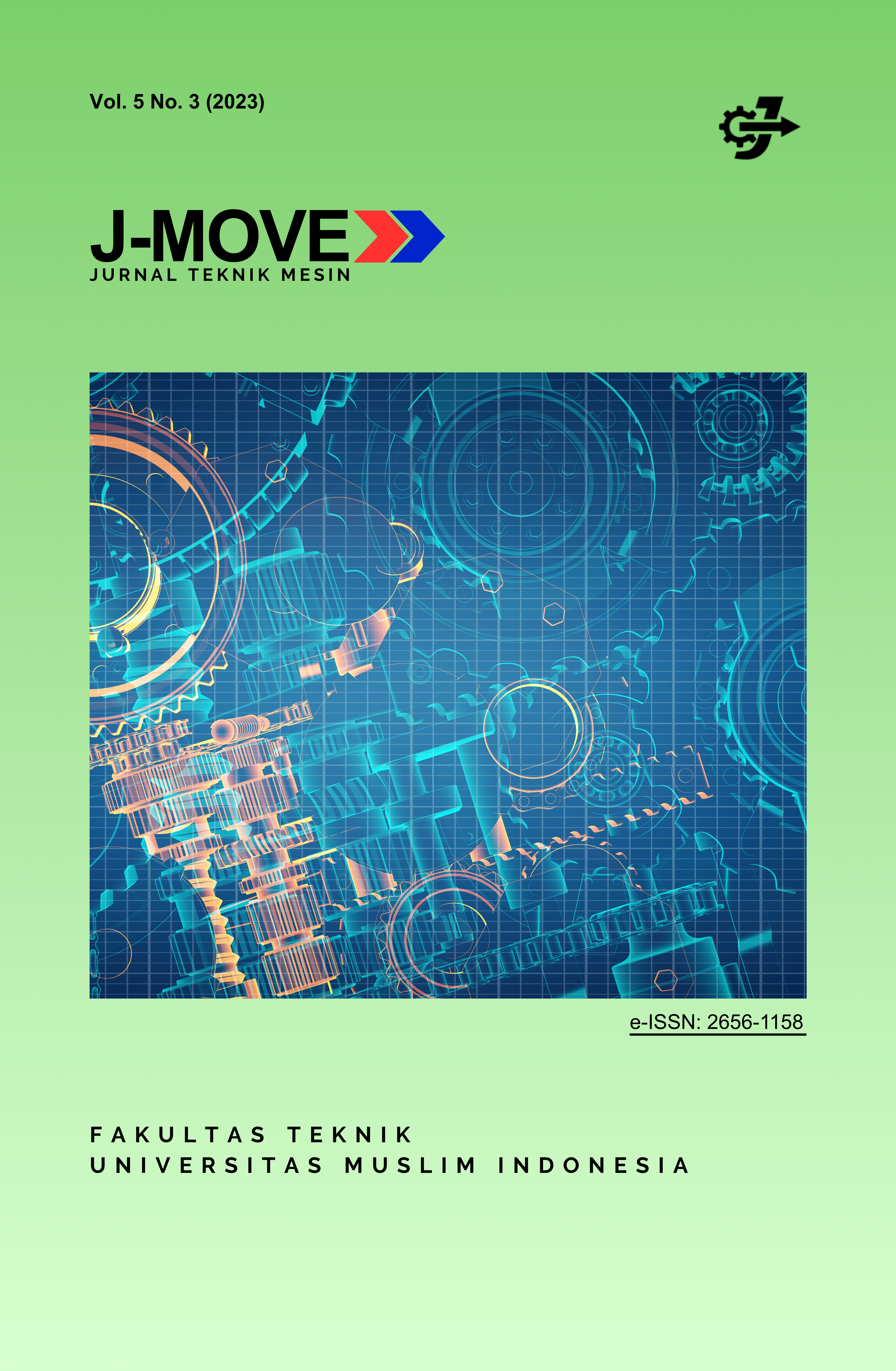Design and Analysis of Testing a Plant Irrigation Sprinkler Device
Keywords:
Sprinkel, Efisiensi, Kadar AirAbstract
Water is a vital element in plant growth. Supplying water to plants can increase their productivity. Adequate water supports higher crop yields, with efficiency observed in the range of 1 liter to 5 liters. Water efficiency shows that the greater the valve opening, the higher the efficiency obtained. This study aims to determine the performance of the sprinkler and to analyze the water discharge efficiency in relation to its performance. The research was conducted at the Mechanical Engineering Workshop of Universitas Muslim Indonesia.
The results showed that at the first valve opening of 20°, with a water volume of 1 liter up to 5 liters, the efficiency ranged from 0.021110921% to 0.024256977%. At a 30° valve opening, with the same volume range, efficiency ranged from 0.040236161% to 0.047205305%. At a 40° valve opening, efficiency ranged from 0.0474456% to 0.0687041%. At a 50° valve opening, efficiency ranged from 0.0659716% to 0.0972627%. Finally, at a 60° valve opening, efficiency ranged from 0.0726605% to 0.1319432%. Based on these results, it can be concluded that the efficiency at the first opening (20°) was lower compared to the fifth opening (60°), and the efficiency increased as the valve opening angle increased.
Downloads
Published
Issue
Section
License

This work is licensed under a Creative Commons Attribution-ShareAlike 4.0 International License.
All articles published in J-Move Journal (Journal of Mechanical Engineering Innovation and Development) are licensed under the terms of the Creative Commons Attribution-ShareAlike 4.0 International License (CC BY-SA 4.0).
- Copyright is retained by the authors.
- Articles may be used, copied, shared, and adapted by others for both commercial and non-commercial purposes, provided that:
- Proper attribution is given to the original authors and to the journal as the place of first publication.
- Any derivative works (adaptations, modifications, or developments) must be distributed under the same license (CC BY-SA 4.0).
By submitting their manuscript to this journal, authors agree that their work may be distributed and reused in accordance with this license.








